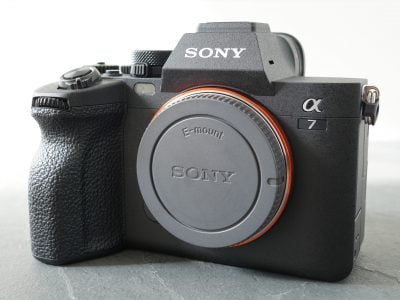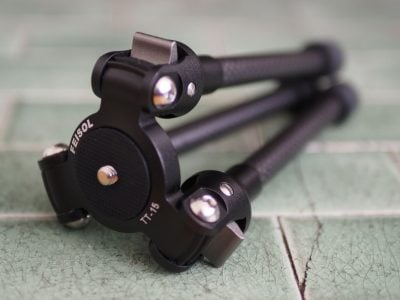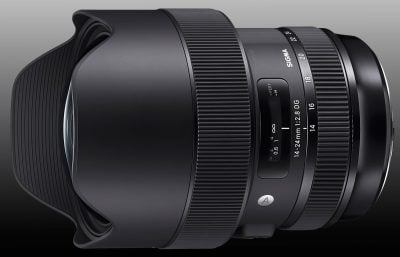Sigma 14-24mm f2.8 ART review
-
-
Written by Thomas
Quality
Longitudinal Chromatic Aberration and focus shift
Large aperture lenses can produce quite some longitudinal CA (loCA, a.k.a. “axial color” or “bokeh CA”) showing up as magenta coloration in the foreground and green halos in the background. These are hard to correct in post-processing. Fortunately the new Sigma shows almost no coloration at f2.8. And there is no focus shift to be seen at these shooting distances.

Above: Sigma 14-24mm f2.8 Art Longitudinal Chromatic Aberration (loCA). 100% crop at 24mm, f2.8, left = foreground, right = background
The Tamron is also almost free of loCA and focus-shift at 24mm :

Above: Tamron 15-30mm f2.8 VC Longitudinal Chromatic Aberration (loCA). 100% crop at 24mm, f2.8, left = foreground, right = background
Sharpness and contrast
Let’s have a look at the theoretical performance of the new Sigma first and compare it to the performance of the Tamron 15-30mm f2.8 VC:
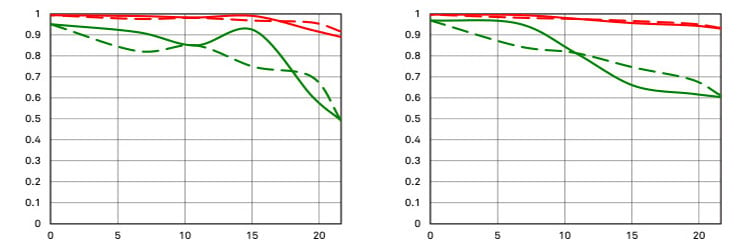
Above: MTF Sigma 14-24mm f2.8 Art at 14mm, f2.8 (left) and 24mm, f2.8 (right)
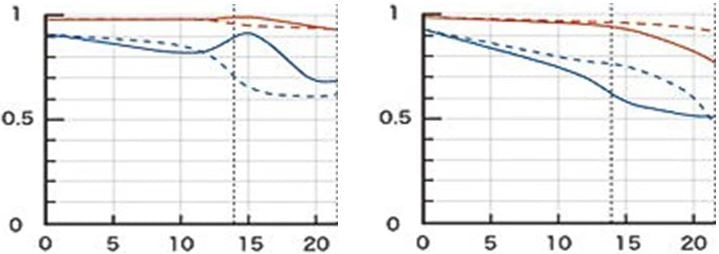
Above: MTF Tamron 15-30mm f2.8 VC at 15mm, f2.8 (left) and 30mm, f2.8 (right)
These charts show the lens-performance of both lenses at f2.8 without influence of diffraction. In these charts higher values are better and the closer the line-pairs are together the less astigmatism (= resolution depends on the orientation of the test-pattern) the lens has. The x-axis displays the distance from the optical axis (=center of the sensor) in mm. I’ll show you the real-life performance at 4 mm (center), 13 mm (APS-C/DX-corner), and 20 mm (FF/FX-corner) on a 46MP Nikon D850 body.
From the charts, overall contrast (red lines) from the new Sigma should be very high with an advantage over the Tamron at the long end (depicted here at 30mm). The green 30 lp/mm line(s) indicates a very high resolution of fine details from the new Sigma in the center. But the lens develops some astigmatism (perhaps field curvature) right outside the center while the Tamron is pretty well-behaved in this respect within the first 10mm. On the short end both lenses look similar with the Tamron having a slight edge in the extreme FX-corner. On the long end resolution of the Sigma drops clearly towards the DX-corner but on average stays above the Tamron (again: at 30mm).
Let’s see how this theoretical performance translates into real life results in the sharpness test based on Siemens-stars. Processing was done in Lightroom 7.3.1/CRAW 10.3 from RAW to Adobe Color profile. Noise-reduction is set to 0, sharpening to 50/0.5/36/10, with no extra tone, color, or saturation adjustment.
To avoid the issues of field curvature, I photographed the test chart three times at each aperture value. First I focused on the center and photographed it at all aperture values. Next I focused on the corner of the cropped-APSC frame and again photographed it at all aperture values. Finally I focused on the corner of the full-frame and again photographed it at all aperture values. The crops below are taken from the respective sequences. This approach avoids the impact of field curvature, although with the focus-fixed and the aperture adjusted, there may be some focus shift. White-balance was adjusted to a neutral white and I did some exposure compensation to make the brightness of all crops match. So you will not see light fall-off in the corners. Removal of lateral color aberrations is ON, longitudinal CA are not corrected.
The following are all 100% crops!
First up is an overview of the wide-open performance at different focal lengths. You can jump to the detailed results at different apertures and comparisons with the Tamron 15-30mm f2.8 VC by clicking on the crops of the respective focal length (except for 15mm focal length where the results are not much different from 14mm).
Sigma 14-24mm f2.8 Art; 100% crop from center, APS-C/DX-corner, FF/FX-corner

Above: 14mm, f2.8

Above: 15mm, f2.8

Above: 18mm, f2.8

Above: 21mm, f2.8

Above: 24mm, f2.8
Sigma’s new lens is very sharp in the center throughout the zoom-range.The APS-C-corner is also very sharp up to 18mm focal length but softens towards the long end. And the FF/FX-corner is sharp wide open up to 15mm and then softens a bit without becoming too mushy. You can also see already that the new Sigma has very little distortion for such a wide angle lens. There are more examples to judge distortions at the end of the Samples page.
If you want to see all the details and comparisons with the competition from Tamron, read on. There is also a detailed analysis how the lens performs in a radius of 10mm around the optical axis at the short end to see whether the dip in the meridional MTF curve around 6mm has any relevance.
Or you can fast-forward to the performance at long distances.
The following 100% crops for each focal length show the new Sigma at f2.8 then the Tamron 15-30mm f2.8 VC at f2.8 to compare performance wide open followed by the crops from the new Sigma at f4.0 down to f11.
Performance at 14mm:
The Tamron is included in this group at 15mm focal length for comparison.
Sigma 14-24mm f2.8 Art at 14mm; 100% crop from center, APS-C/DX-corner, FF/FX-corner

Above: Sigma at 14mm, f2.8

Above: Tamron 15-30mm f2.8 VC at 15mm, f2.8

Above: Sigma at 14mm, f4.0

Above: Sigma at 14mm, f5.6

Above: Sigma at 14mm, f8.0

Above: Sigma at 14mm, f11
Wide open the Sigma is a little sharper than the Tamron in the crop taken 4mm off-center. In the APS-C/DX corner (13mm off-center) the Tamron has a slight lead. And in the FF/FX-corner (20mm off-center) both lenses show very similar resolution although the Tamron suffers from pretty high distortions. Stopping down to f4.0 improves the performance of the Sigma to an excellent level – at least in these crops.
Here is another set of 100% crops taken from a single image at 14mm focal length. So there’s no compensation for field-curvature like in the crops above. The crops shown below are from 0mm, 4mm, 6mm, and 10mm off the optical axis which is well within the APS-C/DX image-circle of 14mm. The crops from the Sigma are immediately followed by the same crops from the Tamron at 15mm focal length, both shot at f2.8.

Sigma 14-24mm f2.8 Art at 14mm, f2.8; 100% crop from 0mm, 4mm, 6mm, 10mm

Tamron 15-30mm f2.8 Art at 15mm, f2.8; 100% crop from 0mm, 4mm, 6mm, 10mm
As you can see the Sigma develops a little astigmatism at 4mm which becomes worse and very visible at 6mm. In the center (0mm) and at 10mm off axis the resolution is very good. This might be an individual phenomenon on the copy that I tested but in principle is in accordance with Sigma’s MTF chart. What surprises me though is the clear visibility of this effect which can also be found in the test-shots of the city in the next chapter. If I can get my hands on a second copy of this lens I’ll look for sample variations. In comparison the Tamron shows no/little astigmatism in these crops which makes it far superior at 6mm, but at the center and at 10mm it is a tad softer than the Sigma.
Stopping the Sigma down to f5.6 clearly improves the situation although one can still see traces of the astigmatism at 6mm off center:

Sigma 14-24mm f2.8 Art at 14mm, f5.6; 100% crop from 0mm, 4mm, 6mm, 10mm
If you zoom in to 16-18mm the astigmatism gradually becomes less pronounced.
Performance at 18mm:
Sigma 14-24mm f2.8 Art at 18mm; 100% crop from center, APS-C/DX-corner, FF/FX-corner

Above: Sigma at 18mm, f2.8

Above: Tamron 15-30mm f2.8 VC at 18mm, f2.8

Above: Sigma at 18mm, f4.0

Above: Sigma at 18mm, f5.6

Above: Sigma at 18mm, f8.0

Above: Sigma at 18mm, f11
At 18mm focal length the Sigma again is very sharp in the center wide open and gains excellent sharpness when stoppend down to f4.0. The Tamron clearly is a bit softer there. But at the APS-C corner both lenses are a match and in the FF-corner the Tamron takes the lead. When selecting the best focused shots for each crop it became clear that the Sigma still suffers from field-curvature while the Tamron was almost devoid of this defect.
Performance at 21mm:
Sigma 14-24mm f2.8 Art at 21mm; 100% crop from center, APS-C/DX-corner, FF/FX-corner

Above: Sigma at 21mm, f2.8

Above: Tamron 15-30mm f2.8 VC at 21mm, f2.8

Above: Sigma at 21mm, f4.0

Above: Sigma at 21mm, f5.6

Above: Sigma at 21mm, f8.0

Above: Sigma at 21mm, f11
At 21mm focal length there is deterioration in APS-C/DX-corner performance over 18mm while the FF-corner sharpens a bit up although some coma reduces contrast a bit. The Tamron in comparison is again less sharp in the center but keeps up better towards the corners of a full-frame sensor.
Performance at 24mm:
Sigma 14-24mm f2.8 Art at 24mm; 100% crop from center, APS-C/DX-corner, FF/FX-corner

Above: Sigma at 24mm, f2.8

Above: Tamron 15-30mm f2.8 VC at 24mm, f2.8

Above: Sigma at 24mm, f4.0

Above: Sigma at 24mm, f5.6

Above: Sigma at 24mm, f8.0

Above: Sigma at 24mm, f11
At 24mm the Sigma looks similar to 21mm with a little softer FF/FX-corner. It’s a bit disappointing that even stopped down to f8 the APS-C- and FF-corners of the Sigma cannot match the resolution of the Tamron at f2.8. But again: The center performance of the Sigma at f2.8 is very good and at f4 simply excellent
Overall Sigma’s new design has two key characteristics: Its performance at or near the center is nothing short of astonishing while directly outside this inner circle of excellence field curvature and astigmatism make for a noticeable drop in sharpness at focal lengths below 18mm (at least on my copy of the lens). Fortunately performance recovers when looking further off center and the adverse effects of field curvature and astigmatism can be reduced by stopping down to f5.6 if you need a well-balanced sharpness across the sensor.
Btw.: If you’re interested in the performance of the Tamron 15-30mm f2.8VC at the long end here are the respective crops at 28mm and 30mm focal length wide open:

Above: Tamron 15-30mm f2.8 VC at 28mm, f2.8

Above: Tamron 15-30mm f2.8 VC at 30mm, f2.8
The Tamron holds up pretty well at the long end with a lot of definition still in the FF/FX-corner albeit at a somewhat reduced contrast
Performance at long distances
The Siemens-star test-targets are shot at a distance of 45x focal length (i.e. at 1 m for 24 mm focal length). But performance of lenses also depends on the shooting distance. Therefore I present another series of test-shots of a city around 1 km away on a D850. Processing was done in Lightroom 7.3.1/CRAW 10.3 from RAW to Adobe Color profile. Noise-reduction is set to 0, sharpening to 50/0.5/36/10, with no extra tone, color, or saturation adjustment. There’s no tinkering with vignette-control so you see it here as it is produced by the lens. I used manual focus in live view optimized for the center at the largest aperture and did not change focus for other apertures. All shots were made at ISO 64 and VR switched off.
First up is an overview of the wide-open performance at different focal lengths. You can jump to the detailed results at different apertures and comparisons with the Tamron 15-30mm f2.8 VC by clicking on the crops of the respective focal length (except for 16mm which was not so much different from 18mm). As usual I have selected the diagonal that provided the better corner results as almost any lens is a bit decentered.
Sigma 14-24mm f2.8 Art; 100% crop from center, APS-C/DX-corner, FF/FX-corner

Above: 14mm, f2.8

Above: 16mm, f2.8; also available at f4.0, f5.6, f8.0, f11

Above: 18mm, f2.8

Above: 21mm, f2.8

Above: 24mm, f2.8
In this long-distance test the new Sigma shows very sharp center performance at every focal length right from f2.8 on. The APS-C/DX-corner is a bit softer especially at 16mm and 18mm while the FF/FX-corner is soft wide open at 14mm, good to very good between 16mm and 21mm and a tad softer at the long end. If you want to see all the details and comparisons with the competition from Tamron, read on. Or fast-forward to the next chapter on rendering of point-light sources at night-shots.
The main image shows the complete scene wide open to give you an impression of the angle of view and to judge vignetting. You can access the respective shots up to f11 via the links beneath the main image. Following the main image are 100% crops from the center, the APS-C/DX-corner and the FF/FX-corner at f2.8 from the new Sigma and the Tamron 15-30mm f2.8 VC at f2.8 to compare performance and then from the new lens at f4.0 down to f11.
You can click on each image to access the large original. Please respect our copyright and only use those images for personal use.
Results at 14mm focal length:

Above: Sigma 14-24mm f2.8 Art at 14mm, f2.8; also available at f4.0, f5.6, f8.0, f11

Above: Sigma 14-24mm f2.8 Art at 14mm, f2.8; 100% crop from center, APS-C/DX-corner, FF/FX-corner

Above: Tamron 15-30mm f2.8 VC at 15mm, f2.8; 100% crop from center, APS-C/DX-corner, FF/FX-corner; also available at f4.0, f5.6, f8.0, f11

Above: Sigma 14-24mm f2.8 Art at 14mm, f4.0; 100% crop from center, APS-C/DX-corner, FF/FX-corner

Above: Sigma 14-24mm f2.8 Art at 14mm, f5.6; 100% crop from center, APS-C/DX-corner, FF/FX-corner

Above: Sigma 14-24mm f2.8 Art at 14mm, f8.0; 100% crop from center, APS-C/DX-corner, FF/FX-corner

Above: Sigma 14-24mm f2.8 Art at 14mm, f11; 100% crop from center, APS-C/DX-corner, FF/FX-corner
Let’s see how the performance of the Sigma varies within 10mm off the optical axis and compare it to the Tamron:

Above: Sigma 14-24mm f2.8 Art at 14mm, f2.8;100% crop from 0mm, 4mm, 6mm, 10mm

Above: Tamron 15-30mm f2.8 VC at 15mm, f2.8;100% crop from 0mm, 4mm, 6mm, 10mm
Like before the performance of the Sigma dips a bit at 4mm and 6mm off axis while both the center and 10mm off axis deliver very good results. The Tamron in comparison is a bit better at 4mm and 6mm but a tad softer at 10mm off axis.
Results at 18mm:
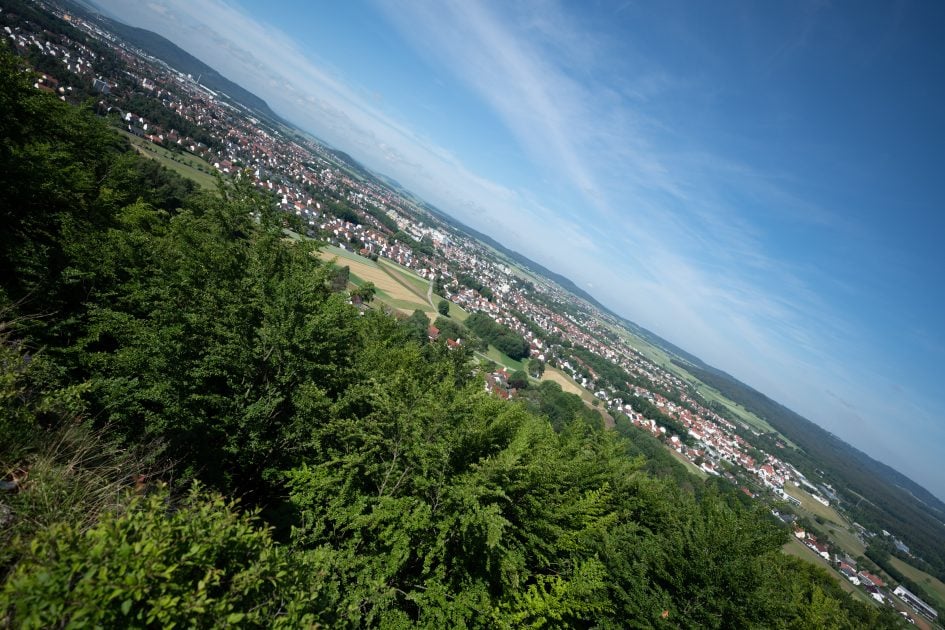
Above: Sigma 14-24mm f2.8 Art at 18mm, f2.8; also available at f4.0, f5.6, f8.0, f11

Above: Sigma 14-24mm f2.8 Art at 18mm, f2.8; 100% crop from center, APS-C/DX-corner, FF/FX-corner

Above: Tamron 15-30mm f2.8 VC at 18mm, f2.8; 100% crop from center, APS-C/DX-corner, FF/FX-corner; also available at f4.0, f5.6, f8.0, f11

Above: Sigma 14-24mm f2.8 Art at 18mm, f4.0; 100% crop from center, APS-C/DX-corner, FX-corner

Above: Sigma 14-24mm f2.8 Art at 18mm, f5.6; 100% crop from center, APS-C/DX-corner, FX-corner

Above: Sigma 14-24mm f2.8 Art at 18mm, f8.0; 100% crop from center, APS-C/DX-corner, FX-corner

Above: Sigma 14-24mm f2.8 Art at 18mm, f11; 100% crop from center, APS-C/DX-corner, FF/FX-corner
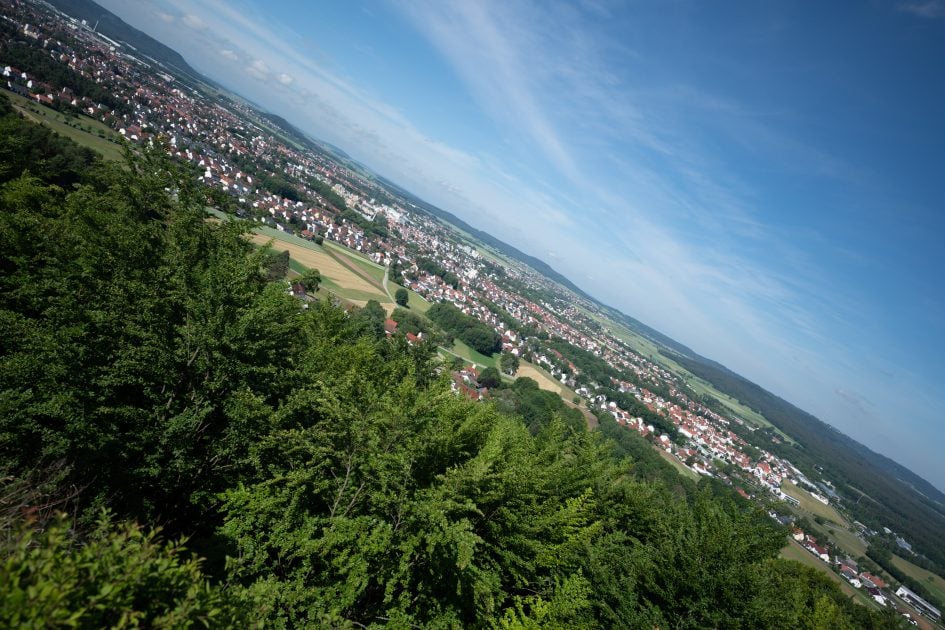
Above: Sigma 14-24mm f2.8 Art at 21mm, f2.8; also available at f4.0, f5.6, f8.0, f11

Above: Sigma 14-24mm f2.8 Art at 21mm, f2.8; 100% crop from center, APS-C/DX-corner, FF/FX-corner

Above: Tamron 15-30mm f2.8 VC at 21mm, f2.8; 100% crop from center, APS-C/DX-corner, FF/FX-corner; also available at f4.0, f5.6, f8.0, f11

Above: Sigma 14-24mm f2.8 Art at 21mm, f4.0; 100% crop from center, APS-C/DX-corner, FX-corner

Above: Sigma 14-24mm f2.8 Art at 21mm, f5.6; 100% crop from center, APS-C/DX-corner, FX-corner

Above: Sigma 14-24mm f2.8 Art at 21mm, f8.0; 100% crop from center, APS-C/DX-corner, FF/FX-corner

Above: Sigma 14-24mm f2.8 Art at 21mm, f11; 100% crop from center, APS-C/DX-corner, FF/FX-corner
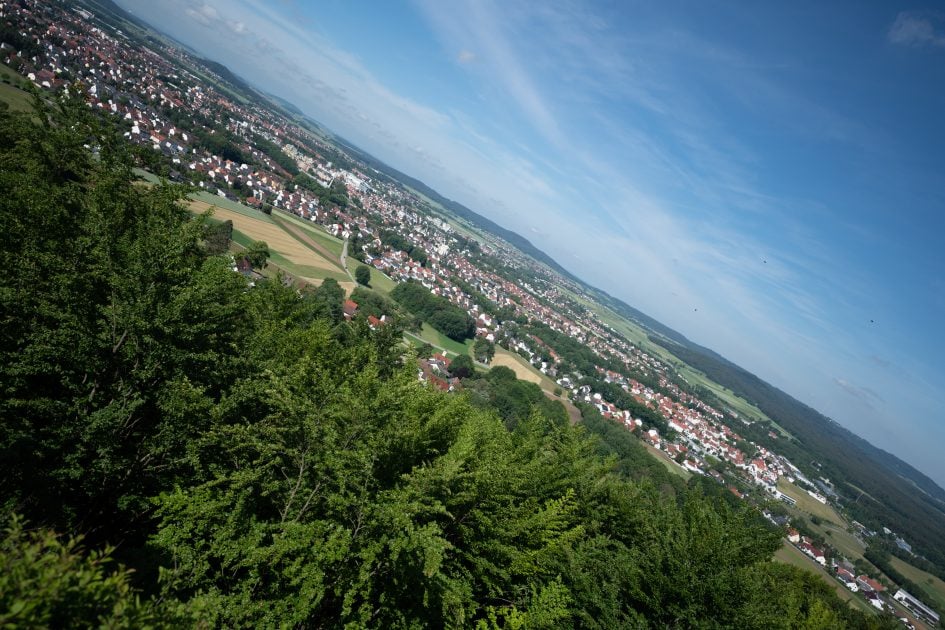
Above: Sigma 14-24mm f2.8 Art at 24mm, f2.8; also available at f4.0, f5.6, f8.0, f11

Above: Sigma 14-24mm f2.8 Art at 24mm, f2.8; 100% crop from center, APS-C/DX-corner, FF/FX-corner

Above: Tamron 15-30mm f2.8 VC at 24mm; 100% crop from center, APS-C/DX-corner, FF/FX-corner; also available at f4.0, f5.6, f8.0, f11

Above: Sigma 14-24mm f2.8 Art at 24mm, f4.0; 100% crop from center, APS-C/DX-corner, FX-corner

Above: Sigma 14-24mm f2.8 Art at 24mm, f5.6; 100% crop from center, APS-C/DX-corner, FX-corner

Above: Sigma 14-24mm f2.8 Art at 24mm, f8.0; 100% crop from center, APS-C/DX-corner, FF/FX-corner

Above: Sigma 14-24mm f2.8 Art at 24mm, f11; 100% crop from center, APS-C/DX-corner, FF/FX-corner
In this long distance test the new Sigma produced its best results at 50mm delivering very good sharpness within the APS-C image-circle right from the start and a good FF-corner when stopped down to f5.6. At other focal lengths stopping down to f5.6 also visibly improves the APS-C-corner.
Rendering of point-light sources at night-shots
Night-shots pose a different challenge for lenses as the contrast is even higher than under bright sun and point-light sources can reveal some weaknesses such as coma, haloing and color-aberrations that do not show up as prominently in other test-shots. The 100% crops below the main image show the effect of coma in the FF/FX-corner of the new Sigma and the Tamron 15-30mm f2.8 VC at various apertures at the wide end:

Above: Sigma 14-24mm f2.8 Art at 14mm, f2.8; also available at f4.0, f5.6

Above: Sigma 14-24mm f2.8 Art at 14mm; 100% crops from the FF/FX-corner at f2.8 (left), f4.0 (middle), f5.6 (right)

Above: Tamron 15-30mm f2.8VC at 15mm; 100% crops from the FF/FX-corner at f2.8 (left), f4.0 (middle), f5.6 (right)
The coma of the new Sigma is pretty small and completely gone at f5.6. The Tamron is similar at the wide end but its coma signature is a little different.
At 24mm focal length both lenses look quite different:

Above: Sigma 14-24mm f2.8 Art at 24mm, f2.8; also available at f4.0, f5.6

Above: Sigma 14-24mm f2.8 Art at 24mm; 100% crops from the FF/FX-corner at f2.8 (left), f4.0 (middle), f5.6 (right)

Above: Tamron 15-30mm f2.8VC at 24mm; 100% crops from the FF/FX-corner at f2.8 (left), f4.0 (middle), f5.6 (right)
While the new Sigma practically has no coma at 24mm the Tamron has to be stopped down to f4 to avoid the typical coma signature.
Rendering of out-of-focus point-light sources
This test is for the rendering of point-light sources in an out-of-focus background. The circle of confusion that is produced by this test is pretty indicative of Bokeh performance (in the background) and light fall-off. Ideally the out-of-focus image of the point-light is evenly lit and perfectly circular, with no “onion-rings”, and without coloration. Large aperture lenses normally produce an effect known as “cat’s eye” the further away from the optical axis the point-light is projected. This is due to optical vignetting in the lens barrel when light enters the lens from an angle.

Above: Sigma 14-24mm f2.8 Art at 24mm, f2.8; also available at f4.0, f5.6, f8.0

Above: Sigma 14-24mm f2.8 Art at 24mm, f2.8; 44% crops from center, DX-corner, FX-corner
Compared to the Tamron 15-30mm f2.8VC at 24mm and 30mm:

Above: Tamron 15-30mm f2.8VC at 24mm, f2.8; 44% crops from center, DX-corner, FX-corner; Also available at f4.0, f5.6, f8.0

Above: Tamron 15-30mm f2.8VC at 30mm, f2.8; 44% crops from center, DX-corner, FX-corner; Also available at f4.0, f5.6, f8.0
The 44% crops above show that the Sigma 14-24mm f2.8 Art produces the nicer Bokeh balls than the Tamron although they still show some outlining and onion rings. But these effects are much stronger on the Tamron. The Tamron also has the slightly smaller Bokeh balls at 24mm and shows a stronger deformation of the circles towards the corners of the sensor. If you zoom the Tamron to 30mm its Bokeh balls grow a little larger than from the Sigma (at 24mm) and the outlining becomes less obvious. Still, the background Bokeh of the Sigma should be more pleasing at the long end than from the Tamron.
Now let’s see how this analysis of out-of-focus point-light sources translates into Bokeh-performance shooting a book-shelf.
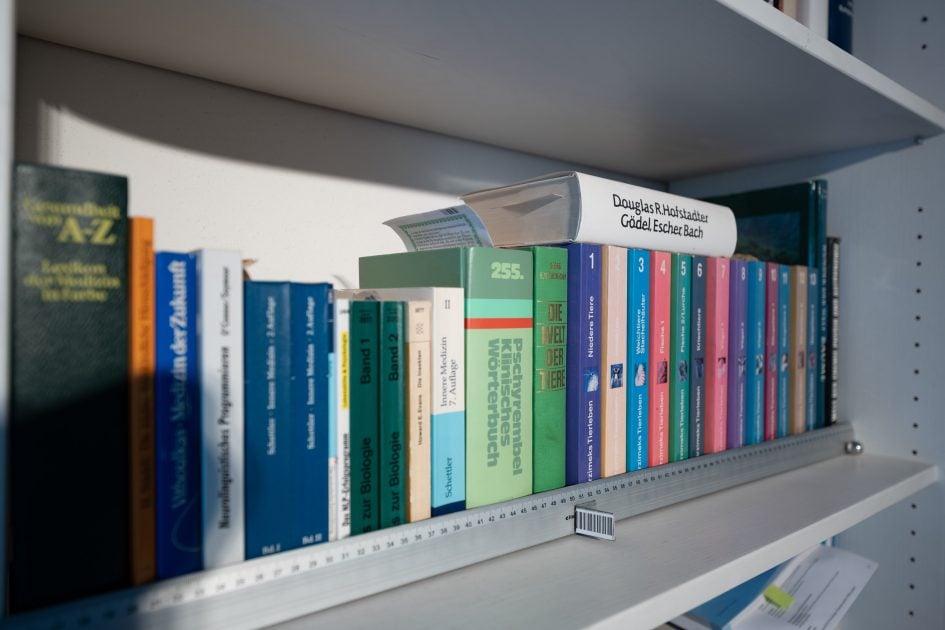
Above: Sigma 14-24mm f2.8 Art at 24mm, f2.8; also available at f4.0, f5.6, f8.0

Above: Sigma 14-24mm f2.8 Art at 24mm, f2.8; 44% crops from foreground, middle-ground, background

Above: Tamon 15-30mm f2.8VC at 24mm, f2.8; 44% crops from foreground, middle-ground, background; also available at f4.0, f5.6, f8.0
Comparing both lenses at 24mm these test shots reveal almost no difference between them. I personally find the transition zone (middle crop) of the Tamron just a little softer than from the Sigma while the Sigma has a little softer background (right crop). But you need a very high contrast subject to see these differences in practice.
Flare, ghosting, and sun-stars
Catching a strong light-source shining directly into the lens is always a risky business especially with ultra-wide angle lenses. It could produce strange colorful ghost-images or reduce contrast considerably through flare and glare. The appearance of flare and ghosting depends on factors like the aperture and the angle of the light hitting the lens. So to judge the proclivity of the new Sigma for these artifacts I went through a series of well calculated shots against a strong light source to provoke glare and ghosting.
The new Sigma is astonishingly well resistant to flare and glare. It does produce some ghosting when the light-source is inside the frame. And outside these artifacts the new Sigma renders a deep black, so there’s little veiling glare. Be aware though that the sun can produce some ghosts at the short end of the zoom range even when its position is rectangular to the optical axis: the bulbous front element is not completely protected by the lens hood in this position.
See below some of the more obvious examples at 24mm and 14mm focal length:
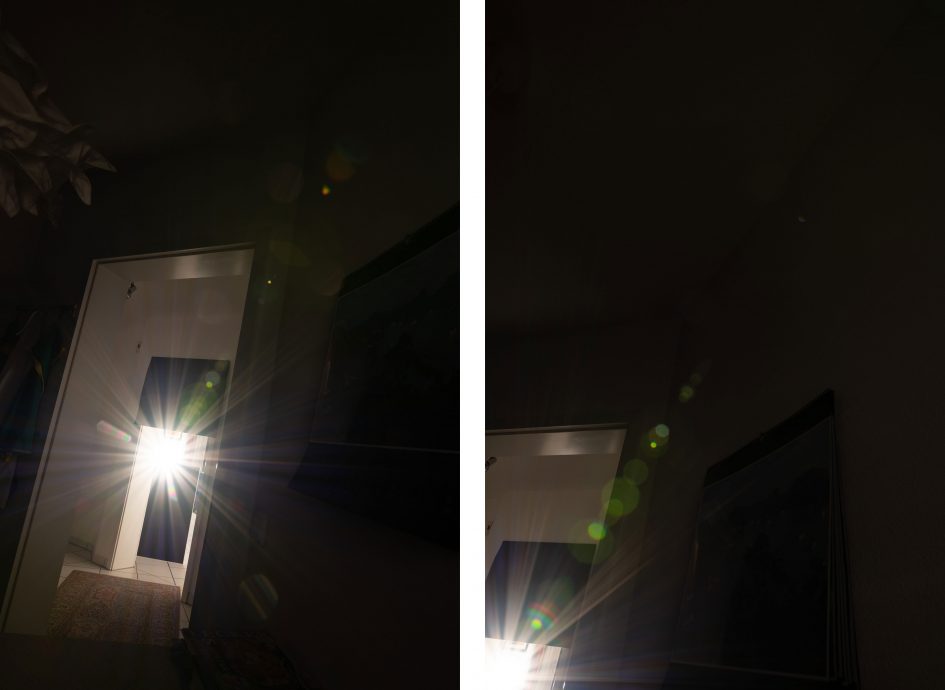
Above: Flare and ghosting. Strong light hitting the Sigma 14-24mm f2.8 Art at 24mm, f11
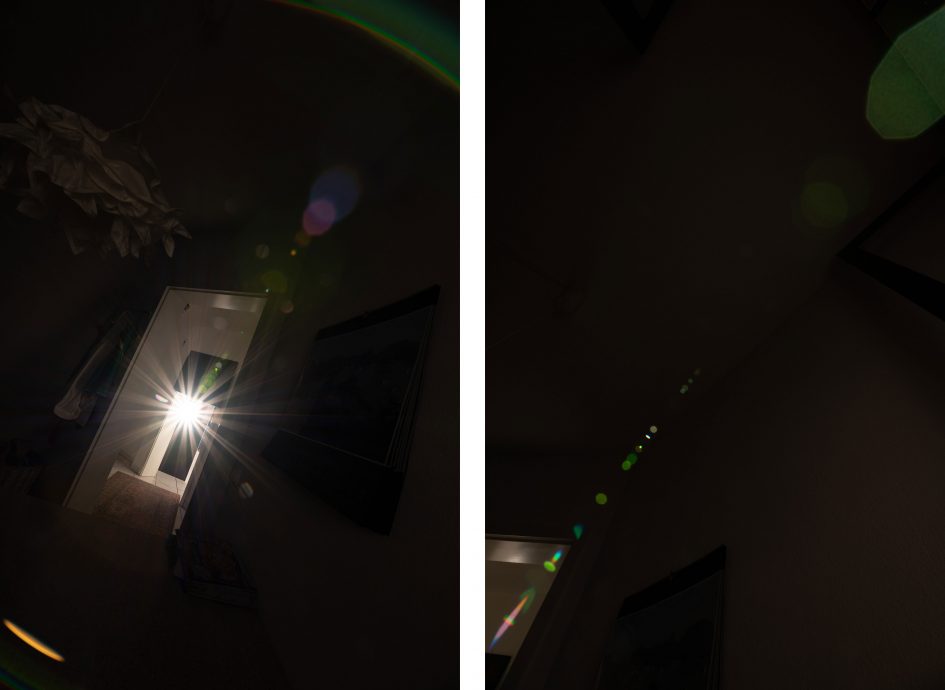
Above: Flare and ghosting. Strong light hitting the Sigma 14-24mm f2.8 Art at 14mm, f11
In comparison the Tamron 15-30mm f2.8 VC produces a bit more glare.
Next check out my sample images!

